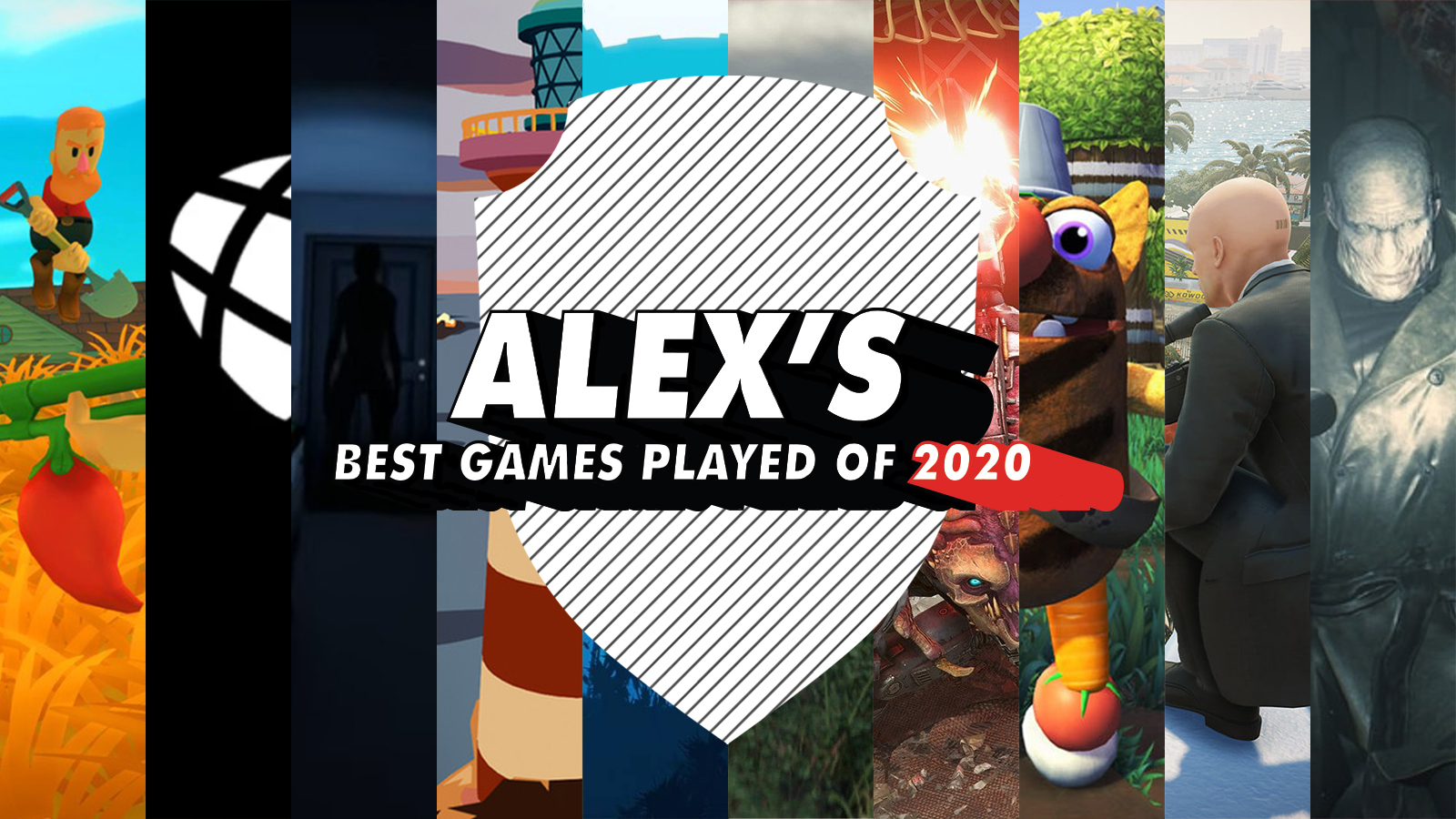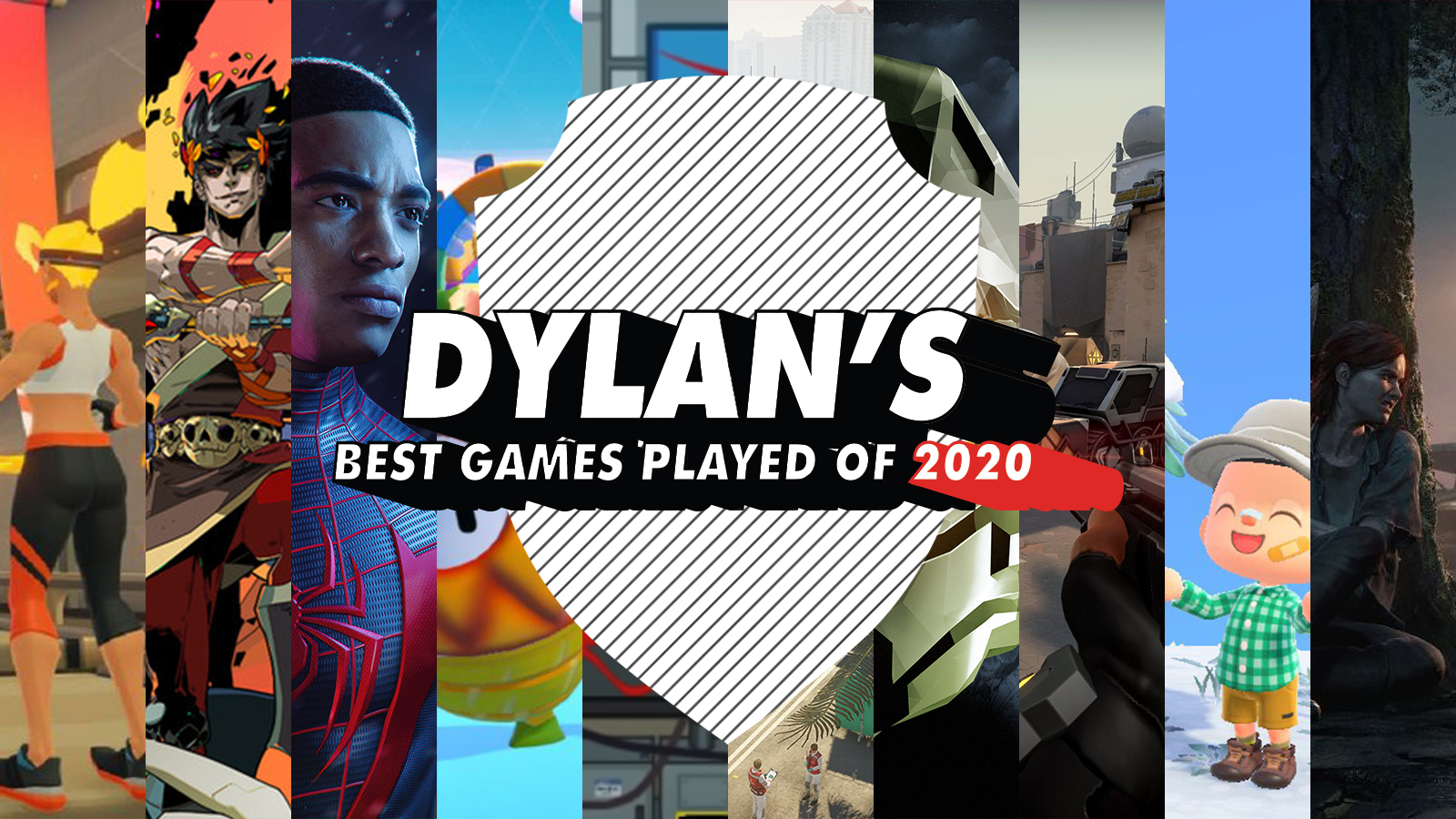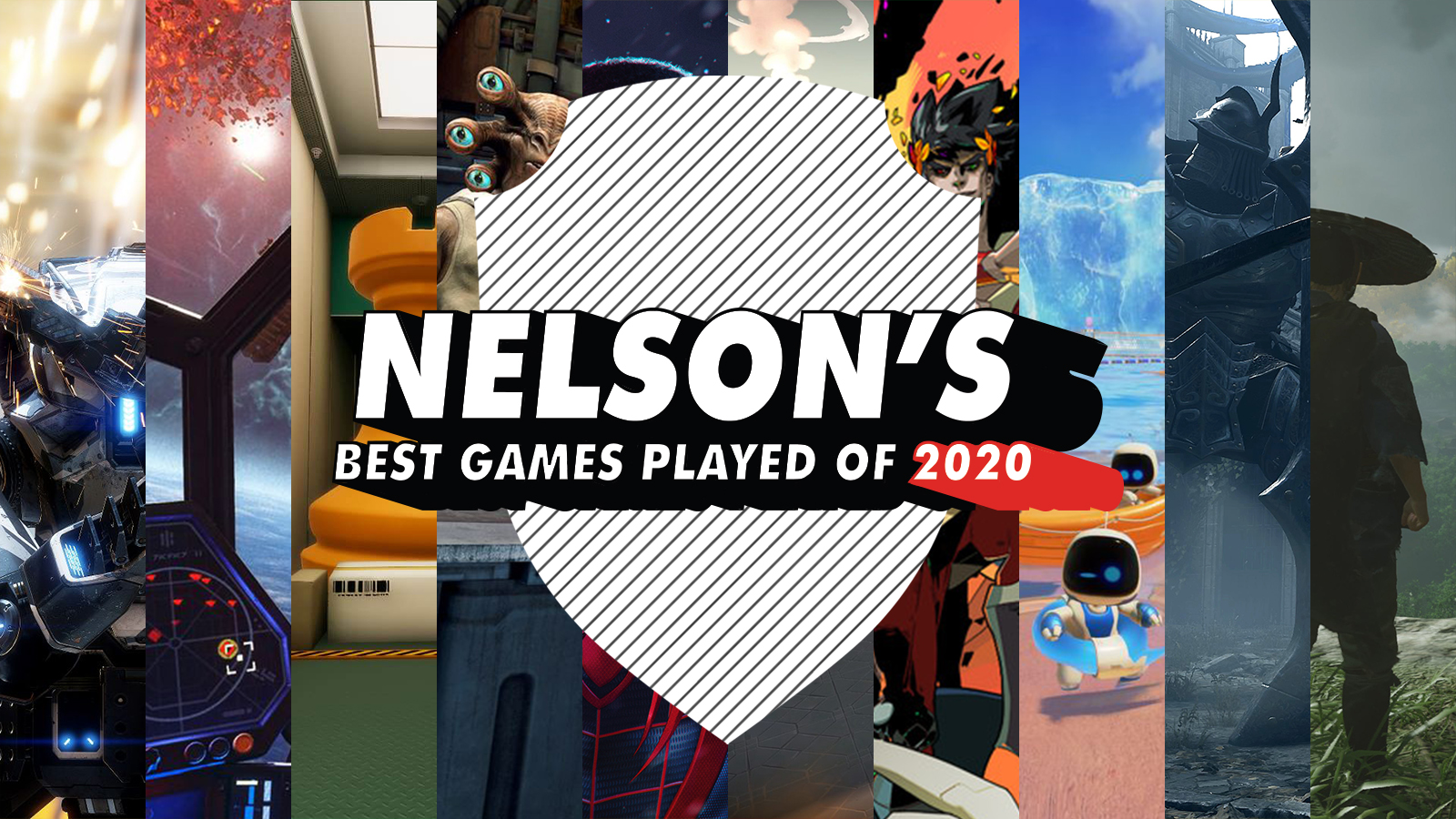t’s been a weird year.
My eclectic taste is only made more apparent looking back at this list, but I can’t say I’m not proud — I started off the year by finally finishing Death Stranding, a game I found so charming it confused me, and finished it with Bugsnax, a game so odd that it immediately charmed me. I enjoy horrors and the macabre, but hardly ever seek them out this much. Perhaps amidst the chaos of everything I wanted horror I could take control of?
And then, as is tradition, found a few new FPS arenas to jump into. Some I loved, some didn’t love me back, but I appreciated all of ‘em. I can’t deny the artsy, twee indie titles I cherish so much, but despite a lot of ups and downs from hyped AAA titles this year, I found a lot to love in them too. The biggest trend by far was to find games that I could enjoy with others, and to that, we saw a wonderful boom in the game world. I’m excited to see the ripples of that as we move into a new year. Wonderful innovations in cooperative and competitive experiences alike have led to a bounty of fresh, passionate ideas, and if there’s anything I look for in my games, it’s just that.
10
Shotgun Farmers
If Bob Ross made a video game, it wouldn’t be a shooter. But if it were...
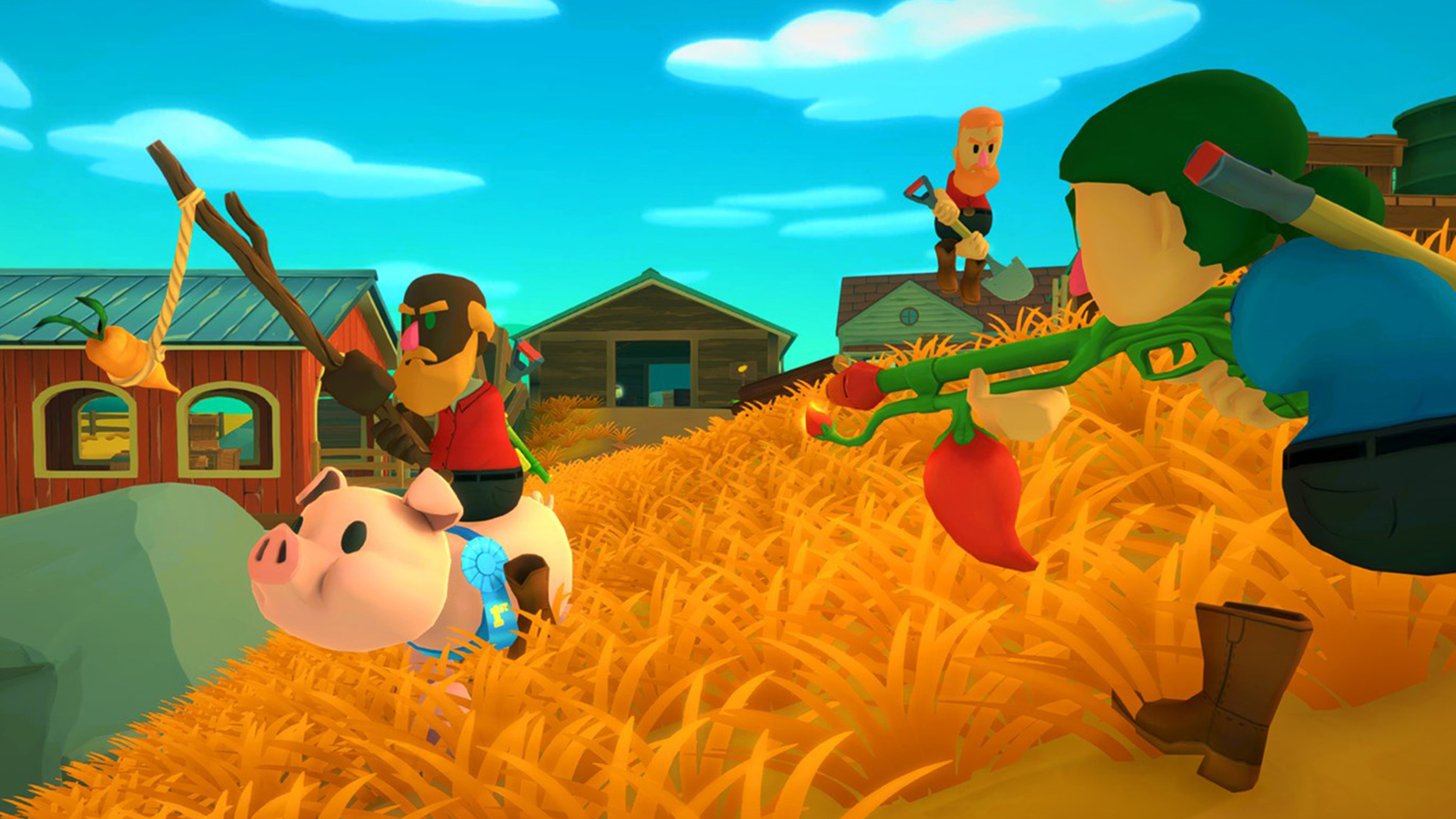
Some shooters demand the most of your reflexes and energy, some require monumentally acute awareness and precision, and some shooters are Shotgun Farmers — just a cozy walk in a deathmatch garden. There’s no loud noises here, no frantic soundtrack, no blood and gore. If there’s anything Shotgun Farmers is most like, it’s a backyard nerf match with your friends. I played a lot of multiplayer FPS titles this year, and while I get a lot out of thoroughly testing my skills in tightly match-made lobbies, I like that Shotgun Farmers offers a respite.
Here’s the deal: it’s a brightly colored multiplayer FPS where everyone’s a farmer and the guns are all various vegetables and fruits. You’ve got the Sniparagus Rifle, the Carrocket launcher, the M6Bean. Shots you miss hit the ground and plant seeds that grow into new weapons, and there’s no reloading, so you have to keep moving and pick up new guns when you run out. Maps are well designed and have a lot of variety as far as height and space goes, so picking your battles carefully is encouraged. It does all of the basics just right, damage numbers are just enough to make shotguns great at the right ranges, kills feel earned but not too hard to get, and movement is genuinely skill based but not too intense. Where so many shooters sought to strive for greater and tougher and bigger, I just have to applaud Shotgun Farmers for aiming where it saw a plot no one else was vying for, and planting a seed.
Shotgun Farmers is a deathmatch I can relax to. A multiplayer experience that vibes with an afternoon where I’m tired of everything and need to actually unwind. There’s basically no toxicity and no sweaty try-hards, just farmers playing a good honest game.
9
Blaseball
Time to teach you some discipline.

We interrupt your regularly-scheduled BGP write-up with an important update from the editor.
Hey y’all! Dylan here. Alex asked me to crash his top ten list to talk about Blaseball because, well, frankly, Blaseball is really difficult to talk about.
At its most basic, Blaseball is virtual baseball — baseball at your mercy, if you will — where computerized baseball teams with names like the Kansas City Breath Mints and the Seattle Garages play baseball against each other every hour, on the hour, every day, except for Sundays. Sunday is for the siesta.
You are a fan of Blaseball — or you will be, soon enough — otherwise known as a participant, and it’s your job to bet on who will be the winning team on any given game. You can bet on your chosen home team — for me, that’s the Breckenridge Jazz Hands, who I’ll always back because, as they say, “we’ve got winning to do, just for you” — or simply bet on whichever team has the higher probability of winning each game. You then use your winnings to purchase various stat boosts and items for yourself: the ability to bet more money per game, a passive boon that lets you accrue money whenever your home team wins, or even a single-use fair-weather flute that allows you to change your home team, which I’d never use because I’m ride or die for the Jazz Hands.
Your money can also be used to purchase “votes,” which is a secondary currency used to cast different decrees and blessings, all of which get tallied up at the end of each Blaseball season, which takes place of the course of one realworld week and always ends on Siesta Sundays.
So up until this point, the game is pretty straightforward, right? It’s just simulated Internet baseball with some funny team names like Jazz Hands and Millenials. And okay, I get money, but to what end? To buy tickets for some vote? Sure, I guess I’ll do that. Which one of these decrees do I want to vote for? “Open the Forbidden Book”? That sounds funny. I’ll do that. Oh, it was chosen! I wonder what happens no—
And this is where things get interesting.
Y’see, the ending of Season 1 is what turned this Internet game of baseball into Blaseball. After the decree to open the Forbidden Book — the sum of all Blaseball knowledge — was passed, several things happened:
- All Blaseball diamonds were cast into a solar eclipse, which became the only weather pattern for all of Season 2.
- The umpires’ eyes turned white, giving them the power of incineration.
- The Seattle Garage’s star player, Jaylen Hotdogfingers, was incinerated.
- The Hellmouth swallowed the Moab Desert, turning the local Moab Sunbeams team into the Hellmouth Sunbeams.
In voting for this seemingly random decree, which didn’t even specify what it would do, participants radically changed the landscape of Blaseball, and in response, started updating their understanding of the splort: building a wiki, discussing the events in the official Discord, and generating lots and lots of fan art.
And this is what Blaseball is: a combination of collaborative storytelling machine, infinite lore generator, and live splorts broadcast. Because just like how reallife sports fandom reveres seeing history as it’s being made, fans will also tune into Blaseball for the live play-by-plays, just to pay witness to the miraculous events that occur.
And I consider myself fortunate to have witnessed some of them.
I was there when the Peanut decree was passed, blessing all the fans with delicious peanuts and renaming every Blaseballer whose name was Dan to “Peanut.” I was there when Jessica Telephone helped bring the Hades Tigers their first championship win. I was there when the concept of idolizing players was introduced, creating the Lottery Blessing, which would trade the 14th most idolized player to the team whose fans accrued the most votes. But what if that player had been incinerated, banished to the Null Team? What would happen then? Well, fans did that with Jaylen Hotdogfingers, returning her from the void, but extracting a terrible price.
And who can forget when Blaseball attacked and dethroned god?
However, as much as I cherish it, I must warn people that the ever-growing story of Blaseball gets denser and denser with each passing season. Participating in our nation’s greatest plasttime is much like staring at the sun: you want to be able to fully comprehend its awesomeness, but look for too long and you might go blind. That is, unless you’re looking at Sun 2.
Nestled in this splort is something truly great: a wonderful and inviting community; an ever-changing, fascinating oral history; an inspiring underdog story about building a live splort for folks to enjoy in the middle of what I like to call Hell Year. I invite everyone to check it out, because this experience can’t be found anywhere else.
And, as always, the commissioner is doing a great job.
8
Phasmophobia
Grim grinning ghosts come out to socialize.
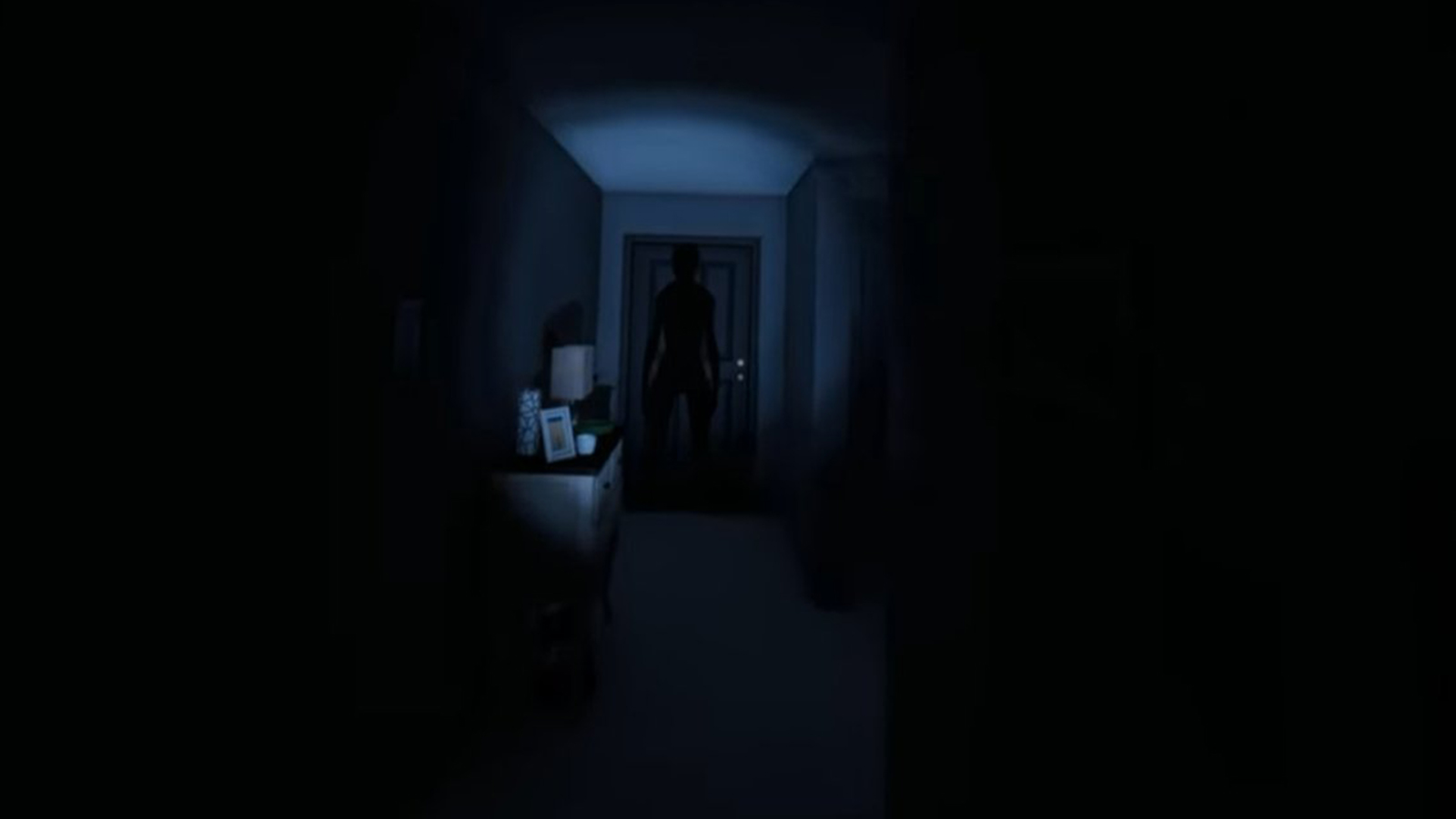
Within the confines of a year requiring separation, studios that released new online cooperative experiences have seen a boon to their efforts. Phasmophobia may be a broken, stuttery mess, but it excels where it needs to for a uniquely terrifying experience.
Meet up in your ghost-hunting clubhouse and select a contract that takes you to one of eight maps. Once you’ve arrived, take a brief stock of your objectives: figure out what kind of ghost you’re hunting, try to snag a picture of it, or observe some other paranormal event. Then you head inside.
As soon as you cross the threshold, there’s a palpable shift in atmosphere — a droning sound keeps your heart racing, and the narrow beam of your flashlight urges claustrophobic inclinations. What follows is a parade of terror ranging from all the phantasmal hallmarks: objects falling off of walls, lights flickering, and appearances from the dead themselves. You might suddenly hear footsteps, or your own heartbeat, or breathing down your neck. Sometimes you’ll hear these things too late because unlike real ghost hunting, in Phasmophobia, you are in actual danger.
The name of the game is research: Phasmophobia asks that you collect evidence of the ghost’s behavior in order to classify it for a follow-up team. The trick is all of this evidence-collecting forces you to interact specifically on the ghost’s terms, requiring you to constantly put yourself in danger for the sake of your job. What helps is your friends are just over there in the same room, experiencing the same terror, or laughing at you. It keeps the experience fresh and light, knowing that at any point you can take a break for the sake of your heart and tag in a buddy, and no matter what happens you’ll both come out of the other end of the ride with a shared joy. With a bit of polish, Phasmophobia is poised to become one of the greatest cooperative experiences games can offer.
7
I Am Dead
The only thing I don’t like is the implication that dead people still have jobs to do.

I Am Dead succeeds at both capturing a wonderful story as well as my game dev fascination by employing a technical trick that’s as puzzling as the game’s actual puzzles. While there is a great story being told about the memories we leave behind when we die, I am enamored with the mechanical combination of Where’s Waldo and the world’s most incredible cross-sections.
I Am Dead seemed to have started life as just that — an amazingly fascinating tech demo where you could phase through 3D models. From there, you would think that the only game character who could do this would be a ghost, and from that sparked a charming story about a quaint fishing village on a New Zealand-esque island which happens to feature some very lovely dead people. You are tasked, now that you are dead, with finding a suitable ghost candidate who can replace the island’s current “Custodian” — a head ghost, so to speak, who can commune with the island spirits and keep the peace between the worlds of living humans and nature. You find these ghosts by hunting down objects that belonged to the candidates in life, and to do that, you need to relive the memories surrounding those objects, reaching into the minds of their old friends and family to hear the stories they left behind. Once you know what the object is, you float through the fully realized 3D dollhouses in order to find it.
This promises you two things: you’re going to understand a lot of little details about these characters once you meet them, and you’re going to be seeing a lot of little details as you pass through the nooks and crannies of these spaces. Secrets tucked behind shelves, in toilet tanks, even in the heel of a shoe. I Am Dead presents these delightful little scenarios much in the same way a child’s puzzle picture book would, and if that excites you, please give this one a look.
6
Risk of Rain 2
Worth noting, the music is indeed electric.
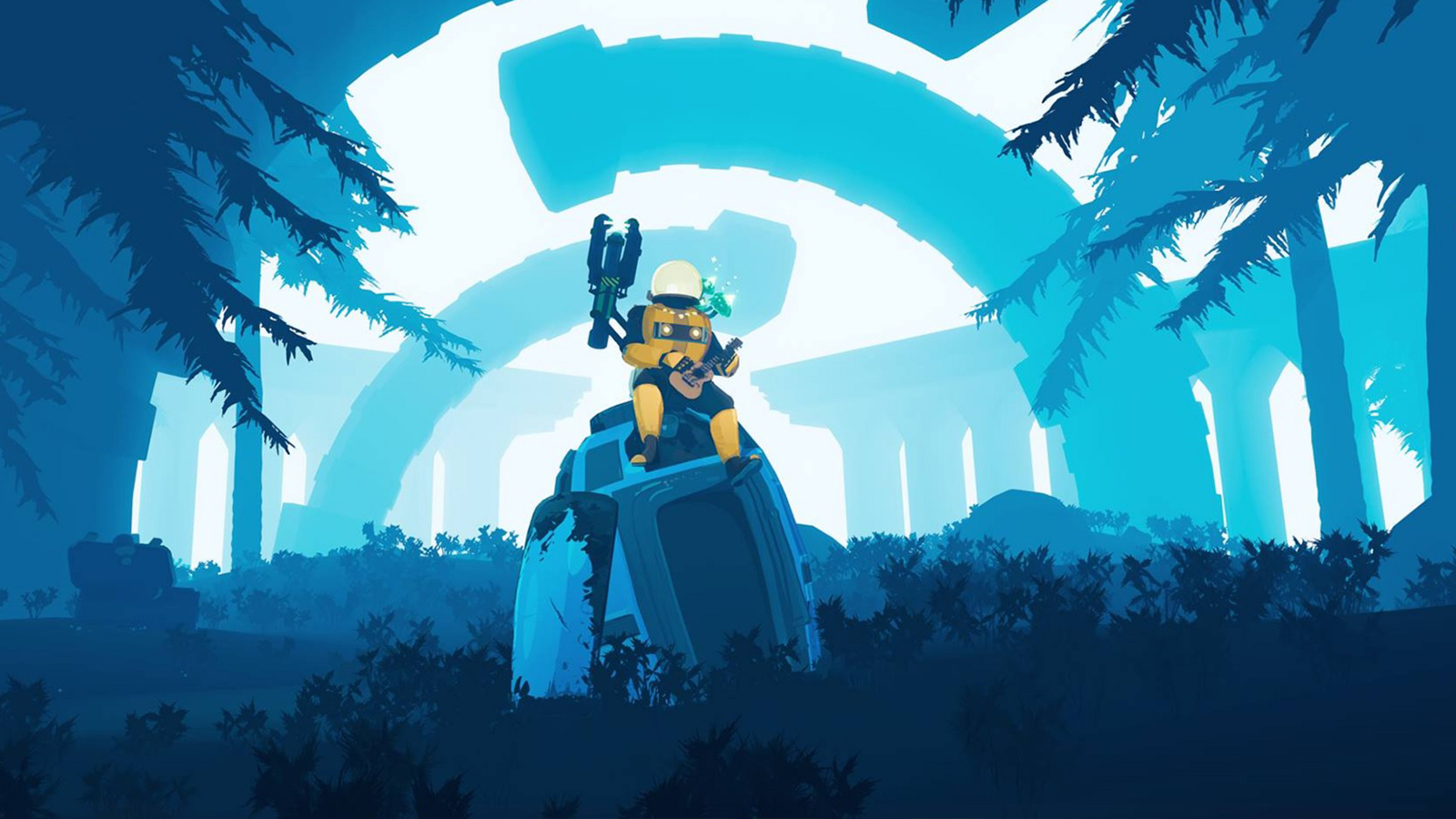
Simultaneously a thrilling and melancholy experience, Risk of Rain 2 excels at both mood and challenge in a visually refined, uniquely cooperative experience. The stage is set on a lonely, artfully produced planet, filled with an air of mysticism and ritual. You crash down in lander pods with your team and set to work collecting lost packages and murdering indigenous life. I want to make it clear here and now what keeps Risk of Rain 2 compelling to me is that it’s both, somehow, a bombastic power trip and unsettlingly emotional.
You pick your unique flavor of exterminator first — and between a plant-piloting robot and a space wizard, the options are extremely varied — before being hurtled towards the planet surface and immediately into a sticky situation. Enemies of a wide variety come at you in waves, killing them rewards experience and money, with the money spent on opening chests. Chests contain passive upgrades, taking the form of objects that physically stick to your character like some kind of Katamari ball. You then find a teleporter and activate it to spawn a boss that you have to defeat before moving on to the next area, all the while the difficulty slowly ramps up, with a stopwatch telling you how long you’ve lasted.
This is the bread and butter, but the lettuce, meat, cheese, and condiments come in and make up the rich flavor of this game. Its atmosphere and mythos is something deep and calculated, spun up out of the ground much like that of an actual ancient society. There’s a rich history on this planet you’re massacring and it too often is lost on you, until one day it isn’t. Old gods found deep underground, a pair of lizard lovers hiding in a cave from your rampage, enemies called “parents” which, it can only be assumed, are protecting someone. You may come back to this game time and time again to see what kind of random power trip it grants you — seventeen feathers stacked on top of you to let you to basically fly, a BFG that can be fired multiple times due to your particular combination of artifacts — but sooner or later the darkness in this game hits you.
Risk of Rain 2 was one of my favorite games last year due to its wildly fun attempt at making every run a totally unique power fantasy, but this year saw its release out of early access and the addition of its final boss and ending. With that, the story of its planet and ourselves reaches a new level of haunting. He wants us gone, off his planet, because Risk of Rain 2 has one thing to say: we’re the bad guys, and we shouldn’t be here.
5
Death Stranding
I wish Mads Mikkelsen was my dad too.
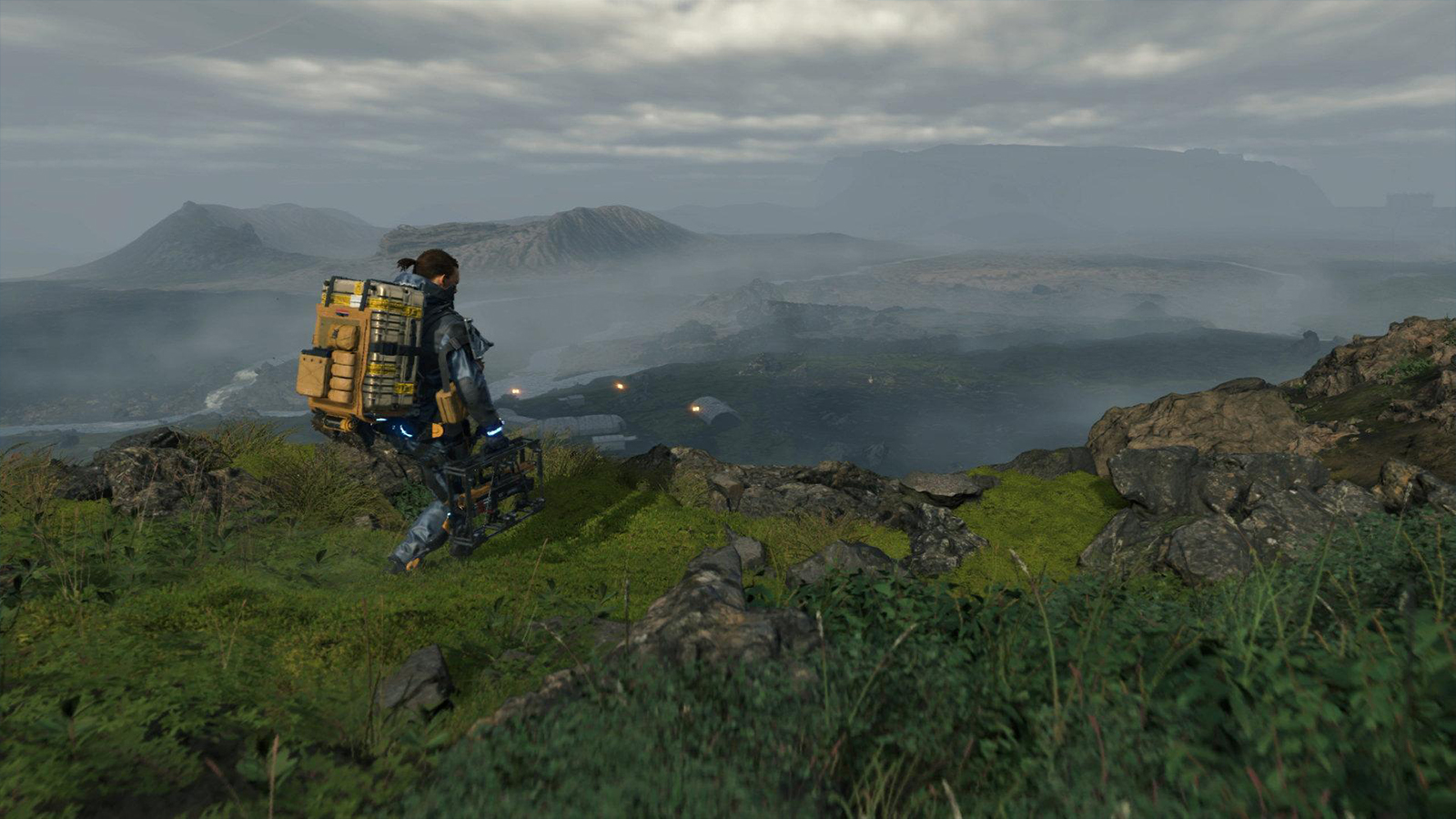
There’s a strangeness to Death Stranding hidden beneath even the obvious oddity that Kojima usually employs, and that hooked me deeper than I ever would have expected. Despite a stumbling story and a poor initial foothold, Kojima Productions’ first game took a comfortable stroll through my heart and left me breathless and thirsty for Monster Energy™.
There’s no denying that, despite his best intentions, Kojima’s charm lies somewhere between kitsch and whimsy, and it turns out applying that to what may be seen on the surface as a horror game was plenty of reason to draw me in. And yet, what kept me going, was just how much I fell in love with delivering packages.
There’s an acute gratification that comes with a good plan followed through. Death Stranding’s deep understanding of this gratification is where it shines brightest — instead of allowing you to place a waypoint on your map and follow it, it only lets you draw lines. You may then follow these lines to your destination, but they may be bad lines. After all, you drew them, and maybe you don’t know this terrain as well as you thought you did. Or how to draw lines, for that matter. Arriving at a destination safely to offload heavy cargo that previously made a trek dangerous and slow, allowing Sam to really stretch his aching shoulders and move freely, feels so good as an in-the-moment connection between you and your avatar. You start to even understand the enemies in this game that crave the cargo you’re carrying — they just want to make deliveries too, to feel useful in a society gone upside down. The connection between Sam and the player is deepened by even more unorthodox mechanical hooks as well, like how you have to keep squeezing the triggers of your controller to maintain a hold on handheld cargo.
Delivery carries a uniquely uplifting message that I can’t recall from any other game like it, de-emphasizing violence and promoting cooperation at every turn. The greatest example being the most unique multiplayer element I’ve ever experienced: structures that you build can be used by other players and aid them in making deliveries. I can’t speak much to the overall story, you’ll either enjoy it or hate it. It’s confusing at the best of times and downright maddening at others, but I can speak to Kojima thoroughly understanding what keeps a game fascinating — themes and mechanics are perfectly intertwined in everything he’s made — and I can’t deny what Death Stranding did to me. In a nightmare world of ghosts that set off nuclear explosions and an America in isolation, I felt an acute satisfaction with every bit of cargo dropped off, as the man who delivers — as Sam Porter Bridges.
4
Doom Eternal
Step, step, grenade. Dash. Shoot. Blood Punch. And pivot and pause and Flame Belch.
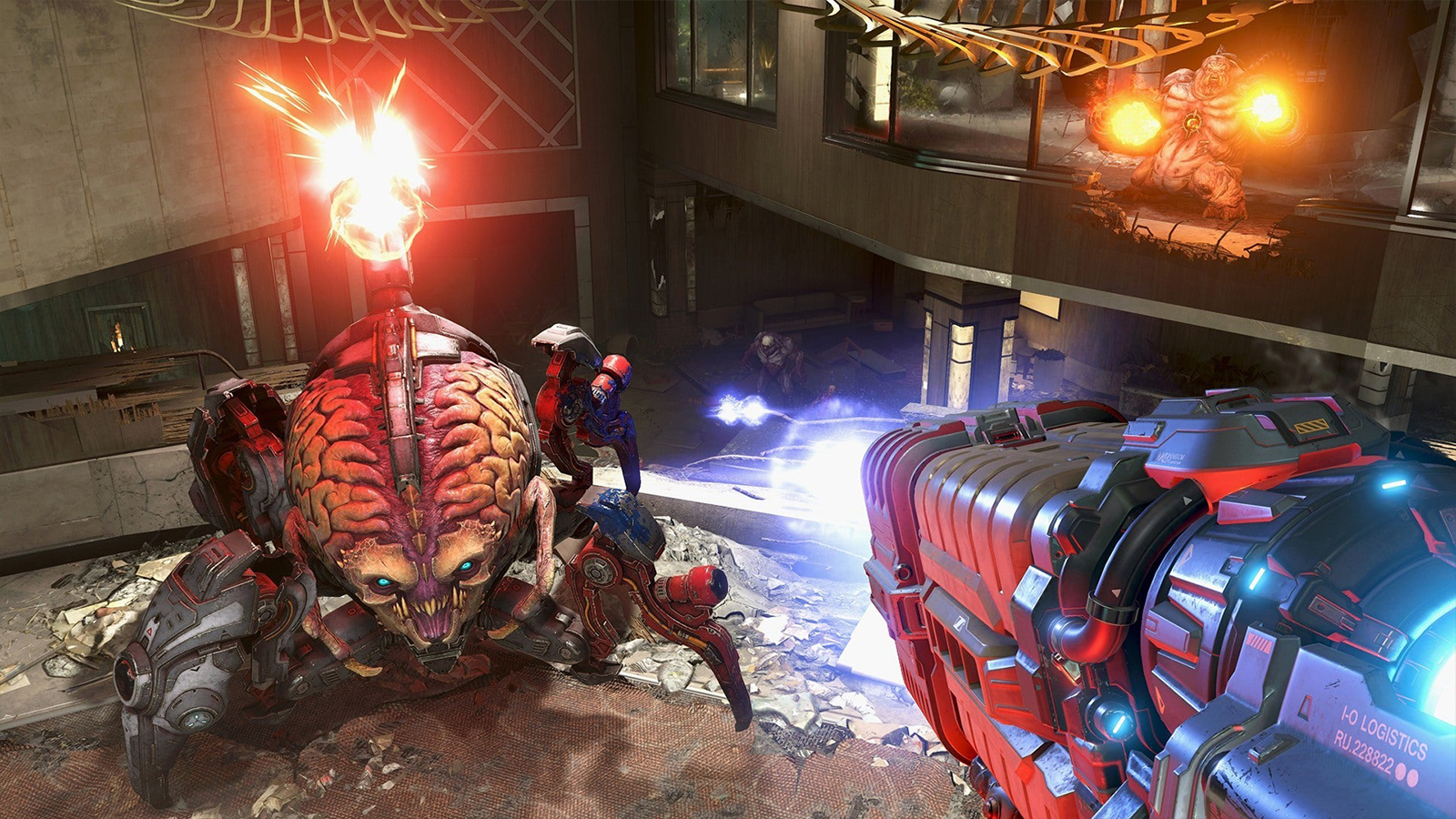
Little known indie studio Wolfire once released an FPS called Receiver that asked you to know your gun’s mechanical parts and actions inside and out — instead of hitting R to reload, you hit R to pull back the slide, T to eject the magazine, G to insert bullets into the magazine, and T to put the magazine back in before hitting R again to trip the slide catch before you died because you forgot to hit Q to turn the safety off. The game remains obscure because this is widely regarded in the field of user experience as a bad idea — overly complicated games and systems don’t really produce happy customers and we’re all used to standardization within genres. But there was an audience who liked it, enough for it to get a handful of updates with new guns and objectives and enough for it to spark conversations about what mastering its absurdly complex system felt like. To be clear, I was in that audience. And mastering that system felt really good.
It’s 2020 now, and we’ve been graced with the sequel to 2016’s magnanimous Doom reboot, a game met with almost universal praise. It challenged FPS standbys like waiting for your health to regenerate and centered it all around being a feared demon-killing monster — you had to press the attack and play aggressively if you were dying. It was a design paradigm that we’re starting to see echoes of in other FPS games today! Eternal, I’m personally proud to say, decided to push that envelope even farther. While this has upset and confused some, I couldn’t feel prouder that it continued to ask “how do we keep the skill curve rising”.
Eternal commands the same as Receiver — a basketful of tools that you will need to utilize to the fullest to survive. Fast enemies need to be frozen; if you’re bleeding out, set things on fire to harvest a little armor; ammo bags have shrunk in capacity, so you actually need to time out and use the chainsaw often. Tools in 2016 that saw barely any use are now important gears in this machine, and their mastery is essential. What rises from this crucible of strict training is a player that is worthy of the Doomslayer mantle. I’ve never felt more like a demon slayer than when I pull off successful combos with Eternal’s arsenal to slip out of dangerous situations while hot-swapping to the weapon best suited for my foe. It’s a frenetic fight for survival against the most demanding challenge this genre has ever handed me, and I think that’s special. I think it’s worth celebrating. FPSes have been around for so long that they were beginning to stagnate, so it’s outstanding that one of the genre’s earliest progenitors stands as one of its most brilliant innovators twice within a generation.
If you’re looking for an FPS that pushes you out of your comfort zone, I recommend Doom Eternal whole-heartedly.
3
Bugsnax
Not recommended on an empty stomach.
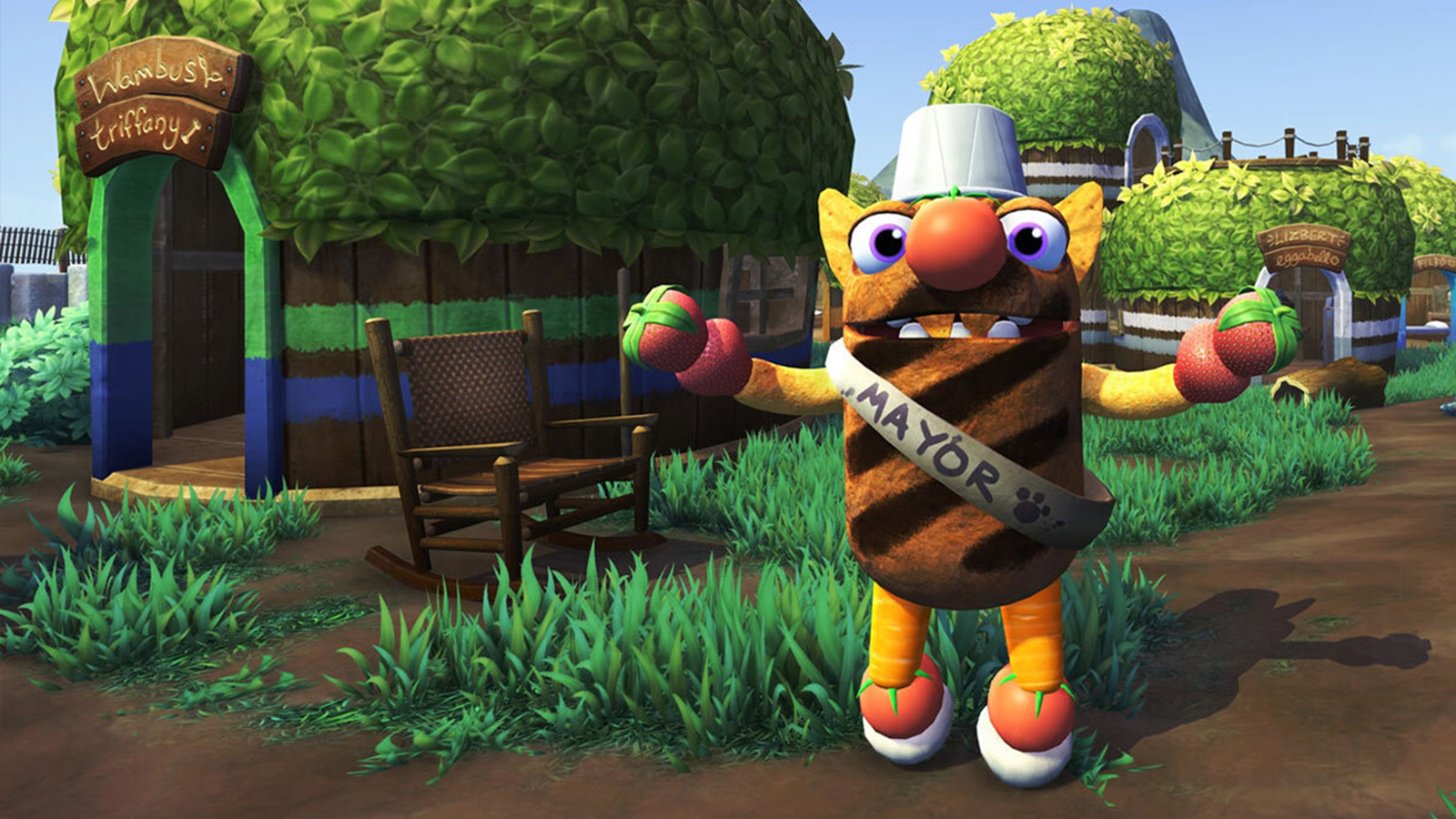
Bugsnax starts with its bizarre elevator pitch and only runs full-steam ahead from there, but never once settles for less in regards to a story that hits incredibly human beats. For all of its wacky shenanigans and low-stakes horror, Bugsnax is most surprising when it deals in real-world emotion.
You are a Grumpus — everyone is, this world is a Grump’s world. Grumpuses are something akin to a muppet, but alive and moving on their own. Working as a journalist in New Grump City, you receive a call to visit Snaxburg, a quaint settlement on nearby Snaktooth Island, so you take the plunge to find out what makes this island so exciting for everyone living on it, until you discover Snaxburg in shambles and everyone scattered across the island, unwilling to get along with each other now that their charismatic leader — Elizabeth Eggburt — is missing. You’re then tasked with catching Bugsnax, a kind of Pokémon-esque mix of animal and food, to convince the Grumpuses to return to the settlement and restore it to its former glory. Capturing each Bugsnak requires a particular mix of nets, traps, and the use of the environment around you. The Bugsnax also, strangely, offer a unique transformation to whomever you feed them to. All this ties into simply getting to know these denizens, Grumpuses who felt their lives on the mainland too troubled to stick to, and helping them deal with their traumas in healthy ways — with friends, found family, and some gloriously, unapologetically gay relationships. I cannot stress that last one enough.
In the end, Bugsnax gets a little bombastic, but it never loses sight of what holds it all together. When you stand on a beach and reminisce with all your friends about the past few days you’ve spent together, it gets a little heavy. Bugsnax took the wildest concept it could and excelled with it in a direction it feels no one expected, and that’s worth checking out.
2
Hitman 1 and 2
Subtlety is a flamingo mascot tossing a propane tank into oncoming traffic.

A sense of space is important in video games, and IO Interactive’s rebooted Hitman series builds its spaces beautifully, full of miniscule stories and interactive beats. Hitman then has you memorize that space as one big puzzle box — before letting you dismantle it in a delicate ballet of murder. The titular Hitman experience, as it were, is a wonderful comedy of errors set in an unapologetically game-y sense — where creativity and quick thinking can shine as brightly as the perfect plan. Murder is an act all too many video games have us deal with. Few excel as much as Hitman does at making it funny.
You’ll be dropped into a delightfully detail-rich playground with each contract, tailor made for mayhem. Roaming guards and civilians, tools and interactables create a breadcrumb trail you can follow to your objective if you’re keen enough — take out a waiter to don his clothes so you can get into the kitchen of a restaurant, then grab this rat poison so you can get a security guard to drink it, and then find him in the bathroom vomiting and knock him out and take his clothes so you can… you get it. The delight comes in where, if a plan goes just right, it’s immensely satisfying to feel like you hit every beat, timed your actions perfectly, and were hyper-aware of every eventuality. But if it goes wrong, it’s still wildly fun to press on in the midst of the chaos you’ve created. Getting spotted in Hitman tests your improvisation in new and unique ways, and the hilarity of freaking out and throwing, say, a soda can at a guard’s head because you panicked and now alarms are going off — it can’t be matched! Hitman delivers on its exciting premise because it understands the delicate balance between taking itself seriously and giving in and letting you smack someone with a large fish in the heat of a dangerous situation.
And murdering a target and quickly escaping is so gratifying — whether you did it without suspicion, getting to quietly walk through a crowd none-the-wiser or running through the panic you caused, there’s so much joy in it. As long as we’re going to be embracing simulated murder, we might as well let some comedy in.
1
Resident Evil 2
The best part about being stalked relentlessly through a hedge maze is—
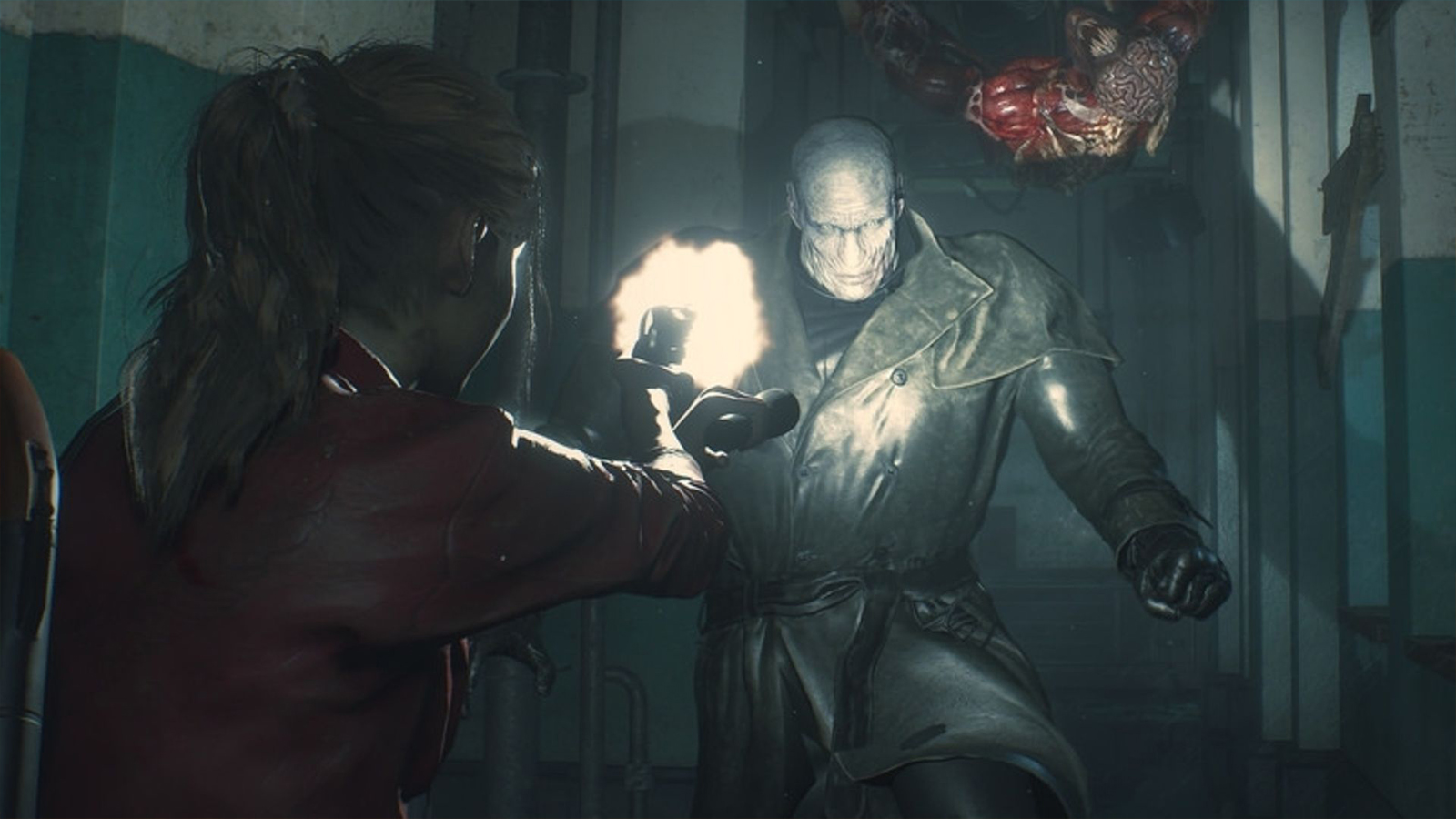
Flow is the state I’d say most, if not all game designers strive for. To feel like you can’t put a game down and, when you do, feeling like you can’t wait to get back to it. To get lost in its moments as you move from objective to objective, constantly feeling like nothing else exists outside this virtual realm. No game this year has captured this feeling for me more than 2019’s remake of Resident Evil 2. When I sat down, I was immediately hooked by its presentation, its feel — every mechanical switch working in unison for maximum immersion — and most of all, its gigantic Zelda-esque approach to level design, working to create a natural path of explorable rooms with discoverable secrets.
RE 2 takes place in the art-museum-turned-headquarters of the Racoon City Police Department as the city falls to a zombie outbreak. Playing as either Leon Kennedy or Claire Redfield, you journey through the depths of the RCPD HQ in an attempt to escape from the undead. But as you finish the story with either Leon or Claire, you’re then tasked to go back and replay the game’s events through the point of view of the other character, highlighting both changes you made on your first trip as well as plot details you would have missed without the additional perspective.
As the game’s magnificent centerpiece, progression involves the delicate unfolding and understanding of the map. There’s an emphasis on the areas of the precinct evolving as you become more familiar with them, challenging that familiarity, whether it’s physically changing the layout of the rooms or throwing the titular Tyrant at you: Mr. X. I love Mr. X. Not just for how terrifying he is, but for how he acts as the greatest test of your spacial awareness — you have to keep moving in Resident Evil 2, whether it be hunting for more ammo or the next piece to a puzzle you’re working on. And if your plan was to go down a certain hallway, only for Mr. X to appear at the opposite end, then you’ll have to figure out how to reroute your trip accordingly.
Keeping you constantly on your toes is just one big part of how this game keeps you focused, but it’s the combat against Raccoon City’s undead denizens that completes the package. The zombies feel so real and responsive from moment to moment — shoot off a leg and they keel over on their stump. Kill one right as it lurches at you and your character will react to having its weight suddenly fall on them, shoving the dead body to the side. RE 2 is a game that feels like every possible avenue of interest was thought out and honed in on, and that’s what earns it the title of the best game I played this year.
